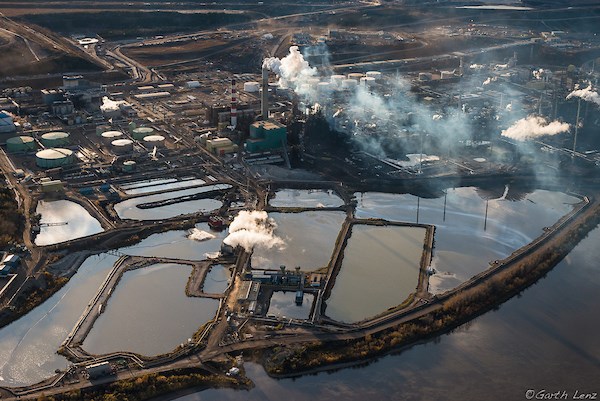Indigenous representatives of an oilsands monitoring program say Alberta won’t increase funding to keep pace with oilsands expansion and inflation — and the shortfall risks compromising monitoring work, according to a letter obtained by Canada’s National Observer.
The joint oilsands monitoring group, composed of industry, provincial, federal and Indigenous representatives, was created in 2013 to monitor the environmental impacts of oilsands development in Alberta. The budget for 2025 is $54.5 million, paid for by industry, but the monitoring program received requests for roughly $76 million worth of monitoring work plans, leaving roughly $21.5 million of work requests unfunded.
On March 20, Indigenous representatives on the oversight committee wrote a letter to the provincial and federal co-chairs warning that the budget is not keeping up with inflation or monitoring demands created by oilsands expansion, and this will negatively impact the quality of work.
The funding formula that requires industry to pay up to $50 million annually for the program was developed in 2013 collaboratively by the Canadian Association of Petroleum Producers and the Alberta government.
Accounting for inflation, what cost $50 million in 2013 should now cost about $66.5 million, the letter signatories write; “Thus, the overall purchasing power of oilsands monitoring has shrunk roughly 25 per cent, while the oil sands industry has nearly doubled in size.”
The signatories added that this runs contrary to the polluter-pays principle. This principle in Canadian law says companies or people that pollute are responsible to pay the costs they impose on society to protect the public from the cost of pollution, for example, oil spill cleanup and lasting impacts.
In 2018, royalty revenues were $3.2 billion. In 2023, that number reached a staggering $16.9 billion, according to the letter.
The Indigenous representatives pushed to prioritize fully funding community-based monitoring programs and core monitoring programs which meant cuts to other important programs.
“Arbitrary cuts to monitoring programs, such as the proposed major reductions in wetlands and biodiversity, put the effectiveness of the monitoring at risk,” according to the letter.
“For severely compromised programs, we would rather that no monitoring occur instead of poor monitoring. Poor monitoring does not provide any value to the communities, nor to the public, but instead provides a veneer of having addressed concerns in these areas.”
Ryan Fournier, press secretary for Alberta Minister Environment and Protected Areas Rebecca Schulz, said it is “misleading” to describe it as programming cuts because the request for $73 million in funding encompassed “53 different work plans, including requests that are duplicative, overlapping or even potentially conflicting.”
Fournier did not provide specific examples of duplicative or conflicting work plans. There is a $3 million discrepancy between the amount of requested funding Alberta provided and the figure cited in the letter.
When asked to respond to the fact that both inflation and oilsands expansion are outpacing the available funding, Fournier said the oil sands monitoring program “is the biggest program of its kind in the world,” and said its budget “has risen over $5 million since 2022, and has the funding needed to continue delivering for Albertans.”
According to Environment and Climate Change Canada (ECCC) spokesperson Hannah Boonstra, the funding was increased by $4.5 million this year "to utilize surplus funds accumulated from underspending in previous years.” The historic underspending is due to a range of factors, including COVID-19 and associated slowdowns on work plan approval, hiring and contracting delays, overestimating costs, consolidating work, approval delays and more, according to the annual reports.
ECCC and Alberta Environment and Protected Areas co-chair the oil sands monitoring program but the federal government was in caretaker mode for the 2025 election and did not sign off on the final annual monitoring plan to avoid delays, Boonstra’s statement noted.
“Since the Government of Alberta is financially accountable for the program, the province approves the financial elements of the monitoring plan,” Boonstra said.
Last year, nearly $540,000 went to Cold Lake First Nation for community-based monitoring to examine how the oilsands industry is impacting a variety of factors, including water quality, berry abundance, fisheries health, muskrats and pitcher plants, to name a few.
Interest in community-based monitoring like this is growing, the letter noted, and “as new communities are onboarded, this forces us to choose between existing Western science initiatives and the needs of Indigenous communities.”
This interest will likely keep growing while funding remains stagnant and “we cannot offer a path forward for those programs and encourage communities to submit proposals, but then largely ignore the requests,” the letter reads.



